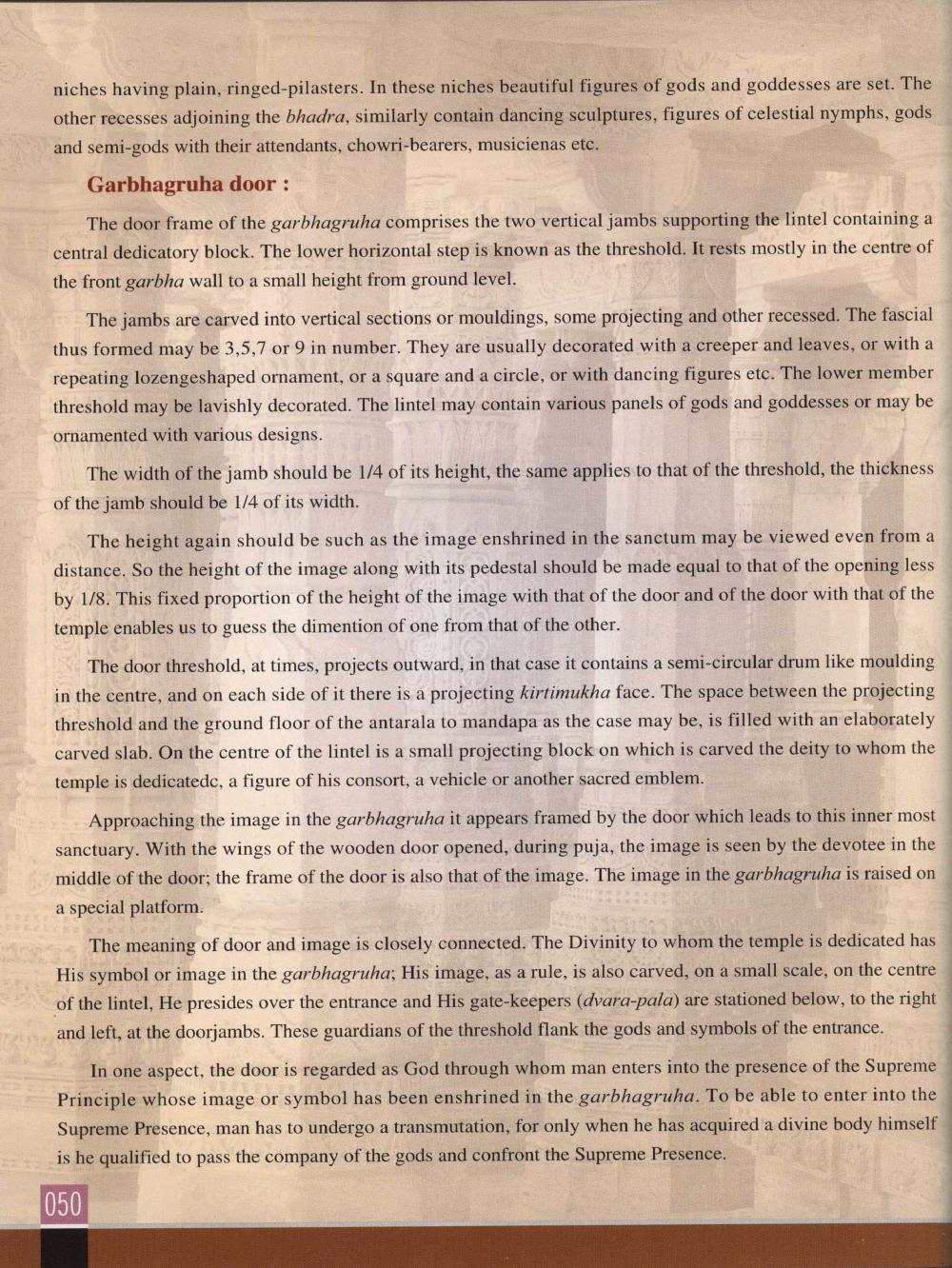________________
niches having plain, ringed-pilasters. In these niches beautiful figures of gods and goddesses are set. The other recesses adjoining the bhadra, similarly contain dancing sculptures, figures of celestial nymphs, gods and semi-gods with their attendants, chowri-bearers, musicienas etc.
Garbhagruha door :
The door frame of the garbhagruha comprises the two vertical jambs supporting the lintel containing a central dedicatory block. The lower horizontal step is known as the threshold. It rests mostly in the centre of the front garbha wall to a small height from ground level.
The jambs are carved into vertical sections or mouldings, some projecting and other recessed. The fascial thus formed may be 3,5,7 or 9 in number. They are usually decorated with a creeper and leaves, or with a repeating lozengeshaped ornament, or a square and a circle, or with dancing figures etc. The lower member threshold may be lavishly decorated. The lintel may contain various panels of gods and goddesses or may be ornamented with various designs.
The width of the jamb should be 1/4 of its height, the same applies to that of the threshold, the thickness of the jamb should be 1/4 of its width.
The height again should be such as the image enshrined in the sanctum may be viewed even from a distance. So the height of the image along with its pedestal should be made equal to that of the opening less by 1/8. This fixed proportion of the height of the image with that of the door and of the door with that of the temple enables us to guess the dimention of one from that of the other.
The door threshold, at times, projects outward, in that case it contains a semi-circular drum like moulding in the centre, and on each side of it there is a projecting kirtimukha face. The space between the projecting threshold and the ground floor of the antarala to mandapa as the case may be, is filled with an elaborately carved slab. On the centre of the lintel is a small projecting block on which is carved the deity to whom the temple is dedicatedc, a figure of his consort, a vehicle or another sacred emblem.
Approaching the image in the garbhagruha it appears framed by the door which leads to this inner most sanctuary. With the wings of the wooden door opened, during puja, the image is seen by the devotee in the middle of the door; the frame of the door is also that of the image. The image in the garbhagruha is raised on a special platform.
The meaning of door and image is closely connected. The Divinity to whom the temple is dedicated has His symbol or image in the garbhagruha; His image, as a rule, is also carved, on a small scale, on the centre of the lintel, He presides over the entrance and His gate-keepers (dvara-pala) are stationed below, to the right and left, at the doorjambs. These guardians of the threshold flank the gods and symbols of the entrance.
In one aspect, the door is regarded as God through whom man enters into the presence of the Supreme Principle whose image or symbol has been enshrined in the garbhagruha. To be able to enter into the Supreme Presence, man has to undergo a transmutation, for only when he has acquired a divine body himself
is he qualified to pass the company of the gods and confront the Supreme Presence. 050




